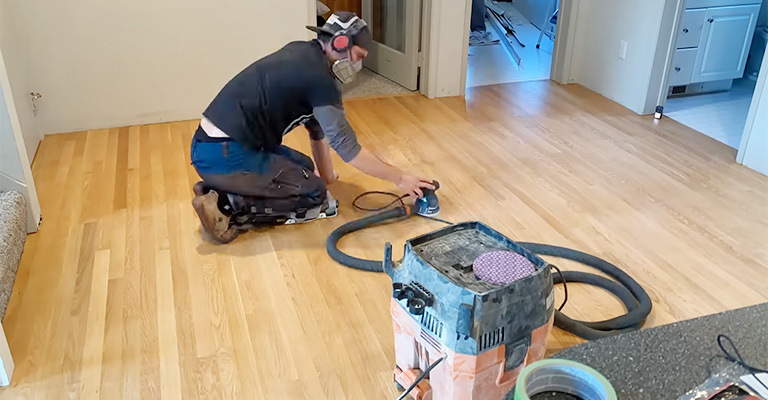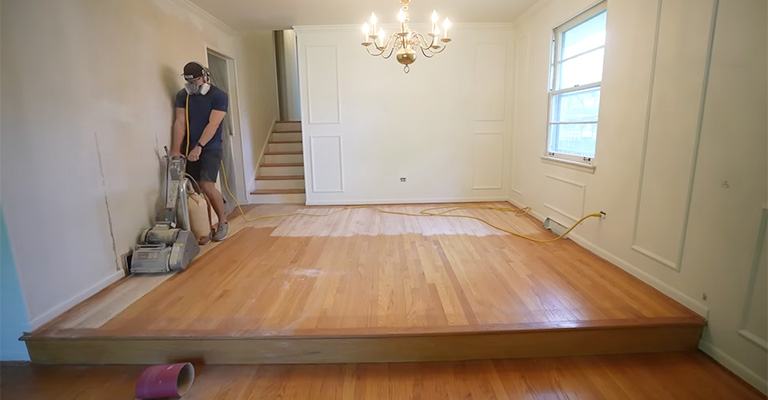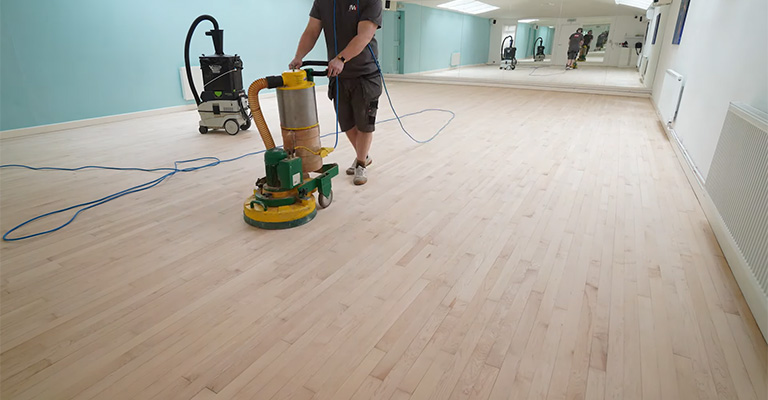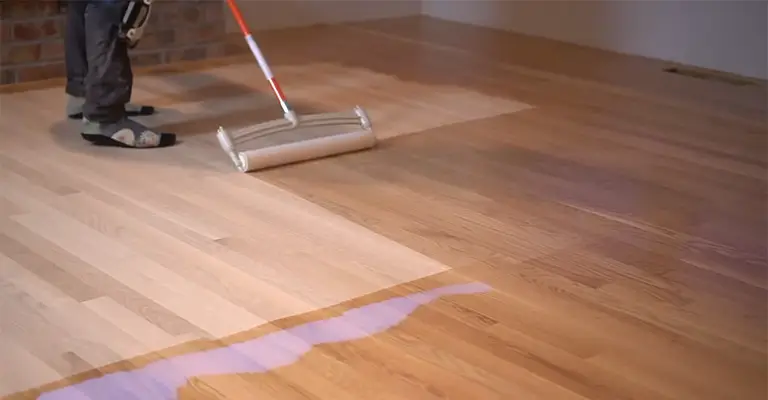Are you gazing at your once-gleaming hardwood floors and wondering if they can ever regain their former glory?
Refinishing hardwood floors can breathe new life into your space, but before you dive into this rewarding project, it’s important to determine if your floors are up for a makeover.
If your hardwood flooring is worn out or scuffed, you may want to consider replacing it. Or your new home has wood floors that do not suit your unique tastes, and you are about to move into it.
There are several reasons why hardwood floors may need to be sanded, stained, and refinished.
Your hardwood floors can be beautifully customized by refinishing them to match the style and decor of your home.
It is not possible to sand down and refinish every floor. Whether or not refinishing your hardwood floors is the right choice for you will be discussed in this article.
What Type of Wood Floor Do I Have?
To begin with, you must determine what type of wood flooring you have. It is important to identify whether the hardwood floors in your home are solid wood or engineered wood.
The difference between engineered flooring and solid wood flooring lies in the fact that engineered flooring cannot be sanded and refinished as solid wood can.
You can tell whether a wood floor is hardwood or engineered by looking at its cross-section after you remove a loose plank. It is solid hardwood if it has a continuous grain.
You are looking at an engineered wood floor if you can see layers of wood, almost like layers of plywood pressed together.
It may not be possible to remove a plank from your existing floor. Another way to determine whether there is a problem is to remove the cover from any vents or registers on the floor.
It should be possible for you to see a cross-section of the wood from this vantage point. A metal saddle can also be removed from the floor around an exterior doorway to expose the wood.
Do I Need A Professional To Refinish My Wood Floors?

The best way to ensure you will not damage your floors by attempting to refinish them yourself is to call a professional to ensure they are thick enough to hold up in refinishing.
You should never refinish wood floors before ensuring that they have enough wood to handle refinishing before you begin.
Refinishing hardwood floors in old homes is particularly challenging. You can expose nails when you refinish floors that are too thin. Not only will you splinter the wood, but you will also risk splintering the floor.
Refinishing that goes wrong can also create floors that are unsafe to walk on, and you can even need to replace the floor entirely.
Having a professional come in and inspect your floors before replacing them will cost you far less than replacing your entire wood floor.
Is Hardwood Floor Refinishing Needed?

Performing the following tests on the traffic areas of your home will help you assess the condition of your hardwood floors.
Water Test
Add a spoonful of water to the floor. The finish on the floor is still good if it forms droplets on the surface. It is necessary to restore the finish if water is slowly absorbed into the wood.
It is important to refinish wood promptly if water soaks up into it quickly and leaves a darker stain on its surface.
If any water remains on the floor, use a paper towel to wipe it up, and repeat it in any other areas that look like they might require refinishing. Refinishing only the worst areas may be sufficient.
What If My Wood Floor Is Too Thin For Refinishing?

Splintering and other types of damage can occur when wood floors are sanded too thin.
In order to complete a full refinishing, 1/8 inch of wood must remain at the top of the plank, above the tongue and groove, because most hardwood planks have tongue and groove interlocking systems.
Business Card Test
If the boards are thinner than 1/8 inch, you may be able to refinish them. The “business card test” can be used to determine the thickness of your wood floorboards.
Whenever there is a gap between floorboards, place a business card there. The point on the card where it meets the floor edge should be marked with a pencil.
Using that method, you can determine how thick the board is between the tongue and groove and the top of the board.
Again, the best way to refinish a wood floor is to hire a professional rather than attempt it yourself, regardless of the thickness or type of wood.
Screening
The floor screening option is another option when dealing with thin floors that cannot be sanded. By screening a floor, you simply remove the existing finish layer without removing any wood.
To maintain their new look, the floors are given a few coats of finish after the old finish is removed.
It may be necessary to replace the affected boards entirely even if they are thick enough for refinishing.
If your hardwood floors have sustained any water damage or have been stained by pet urine or other messes, they may not be able to be refinished.
Caution
It will likely not be able to fix warps due to moisture damage if the floorboards are sanded and refinished to remove urine stains (or odors).
As part of the refinishing process, you may be able to remove less significant stains. To prevent long-term damage to your hardwood floors, you should always clean up liquids and pet messes immediately on a hardwood floor.
Is My Wood Floor Thick Enough To Refinish?
As well as determining whether your floors are hardwood or engineered, this method is useful for determining whether the boards are thick enough to be refinished.
Due to their 4mm to 6mm wear layer, engineered floors can be sanded and finished three to five times.
Unless the wear layer is less than 2mm, engineered wood flooring cannot be sanded to bare wood, but can be lightly scuffed and refinished after sanding.
During the life of a hardwood plank, it should be able to withstand between six and ten refinishes.
They are usually 3/4 inch thick. Due to different milling standards prior to the 1920s, historical wood floors in homes built before then are often only 1/4 to 3/8 inch thick.
It is therefore not possible to sand and refinish these floors more than two or three times.
In the case of older hardwood floors that have already been refinished once or twice, a full refinish is usually not appropriate due to their thinness.
Final Words
In any home, hardwood floors are a popular feature. An impressive look can be created with high-quality wood that lasts for generations.
There is an increase in home value when hardwood floors are installed. Even hardwoods can lose their visual appeal over time.
The appearance can be damaged by foot traffic, spills, water damage, and discolorations caused by harsh sunlight.
Pets or moving furniture might scratch or damage the surface, while dropped objects may ding or uneven surfaces might result from the settling of older homes. If you have the right tools, hardwood floor refinishing is usually a good choice.







